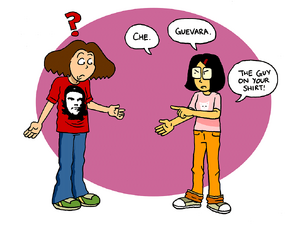| Che Guevara | |||
|---|---|---|---|
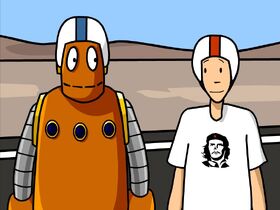 | |||
| Airdate | May 17, 2005 | ||
| Curriculum | Social Studies | ||
Che Guevara is a BrainPOP Social Studies video that launched on May 17, 2005.
Summary[]
The video shows Tim's motorcycle broken down on a lonely land.
At the end, Moby is giving a thumbs up, alone at a desert.
Appearances[]
Transcript[]
Quotes[]
Tim: (coughs as his motorcycle breaks down) This is the third time this hunk of junk's broken down!
Quiz[]
FYI[]
Real Life[]
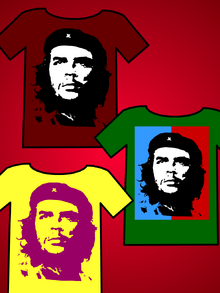
You’ve seen the image a thousand times: Che, wearing a beret, stares out grimly from the front of someone’s t-shirt. Ever wonder where that picture comes from, and how it became so popular?
The original picture was taken in 1960 by a Cuban photographer named Alberto Korda. Che was attending a memorial service for the victims of a ship explosion in Havana harbor, in which at least 75 people were killed. Recognizing that he had captured an iconic moment, Korda titled his photo Guerrillero Heroico, or “Heroic Guerilla” (a guerilla is a soldier who fights in a small, mobile unit against a militarily superior foe).
The picture remained largely unknown until 1967, when an Italian publisher named Giangiacomo Feltrinelli ordered two prints to be used in a political poster. But the real breakthrough came in 1968, when Feltrinelli put the picture for the cover of Bolivian Diary, a daily journal Che kept in Bolivia. The book went on to sell more than one million copies, and Korda’s photo entered the mainstream.
At around the same time, an Irish artist named Jim Fitzpatrick was making his own posters out of Korda’s picture. In 1967, he printed thousands of high-contrast versions of the photo, using only two colors: black and red (the yellow star on Che’s hat was hand-painted). He handed his poster out to anyone who would take it, and the rest is art history.
Ironically, Fitzpatrick’s interpretation of Korda’s photograph adorns the shirts, mouse pads, mugs, posters, and hats of college students around the world. The Communist icon has been capitalized.
Trivia[]
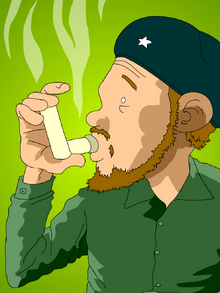
Not to trivialize Che’s life, but here’s some trivia about the famous revolutionary!
- In Argentine Spanish, “che” is an all-purpose interjection that means “hey” or “pal.” Che earned his nickname in Guatemala, where friends were amused by his frequent use of the word.
- Che had a different nickname growing up: “Chancho,” meaning “pig.” At the time, Che didn’t like to bathe much, and would only change his shirt once a week—gross!
- From a young age, Che was afflicted with severe asthma, a condition that he would struggle to overcome his entire life.
- Che’s final destination on his cross-continental trip was a leper colony in Peru, where he and his friend volunteered for several weeks of work.
- The motorcycle Che and his friend used at the beginning of the trip was a 1939 Norton 500 cc, which they named “La Poderosa” (“The Mighty One”).
- Time Magazine listed Che Guevara as one of the most influential people of the 20th century.
Politics[]
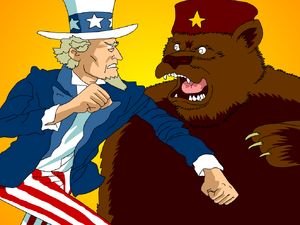
Freedom fighter or bloodthirsty radical? It depends who you ask, especially in the United States. Che’s outspoken hostility to the U.S., as well as his acts of injustice and brutality in Cuba, give his American detractors plenty of ammunition. But the United States’ conduct in Latin America during the Cold War complicates the argument.
As you can learn for yourself in BrainPOP’s movie on the topic, the Cold War was a 40-year struggle between the United States and the Soviet Union, in which the two superpowers (and former allies) jockeyed for global dominance after World War II. America tried to win other countries over to capitalism and democracy, while the Soviet Union tried to export communism.
Fortunately, the two nuclear powers never fought directly, but each often gave military and monetary support to friendly groups inside weaker countries. The United States was especially prone to this kind of meddling in Latin America, where the Central Intelligence Agency (CIA) toppled governments with Communist sympathies and gave aid to anti-Communist rebels. In some cases, the U.S. installed or supported brutal dictators simply because they opposed communism. Against this backdrop, it’s easy to understand Che’s resentment for the United States.
But to many Americans, these actions in Latin America were justifiable acts of self-defense, since the Soviet Union was eager to use other Communist countries as military bases. In 1962, they even placed nuclear missiles in Cuba, a country just off the coast of Florida! Others feel that, like Che and so many other Communist revolutionaries, America was motivated by good intentions in the Cold War, but still engaged in inexcusable behavior.
Arts And Entertainment[]
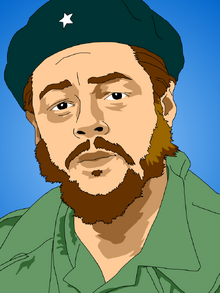
Whatever you may think of Che’s politics and life, there’s no denying that his story was made for the big screen. Here are some film adaptations from the last 40 years.
Che! Cashing in early on the Che Guevara mystique, this 1968 film was released just six months after the revolutionary’s execution in Bolivia. It stars Omar Sharif as Che, turning in a twitchy, wild-eyed performance. And Jack Palance, star of countless westerns and war movies, plays Fidel Castro!
El “Che” Guevara: Another early entry, this Italian biopic was released in Sweden in April of 1971. Like its predecessor, it was not well received.
Hasta la Victoria Siempre: This 1997 documentary tells Che’s story with extensive archival footage and photos.
The Motorcycle Diaries: Based on Che’s autobiographical account of the same name, this 2004 Spanish-language film dramatizes Che’s formative journey across South America. The first critically acclaimed movie about Che, it stars Mexican actor Gael García Bernal.
The Argentine and Guerilla: Directed by Steven Soderbergh, these 2008 films star Benicio del Toro as Che. The Argentine covers the Cuban Revolution, and Guerilla follows Che in the Congo and Bolivia. Both movies premiered at the Cannes Film Festival under the single title Che.
FYI Comic[]
